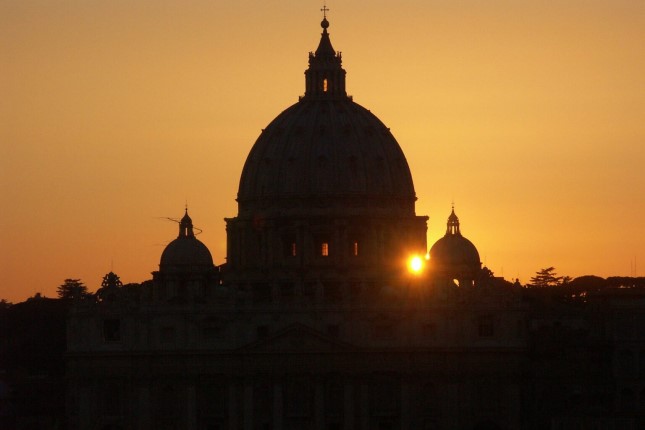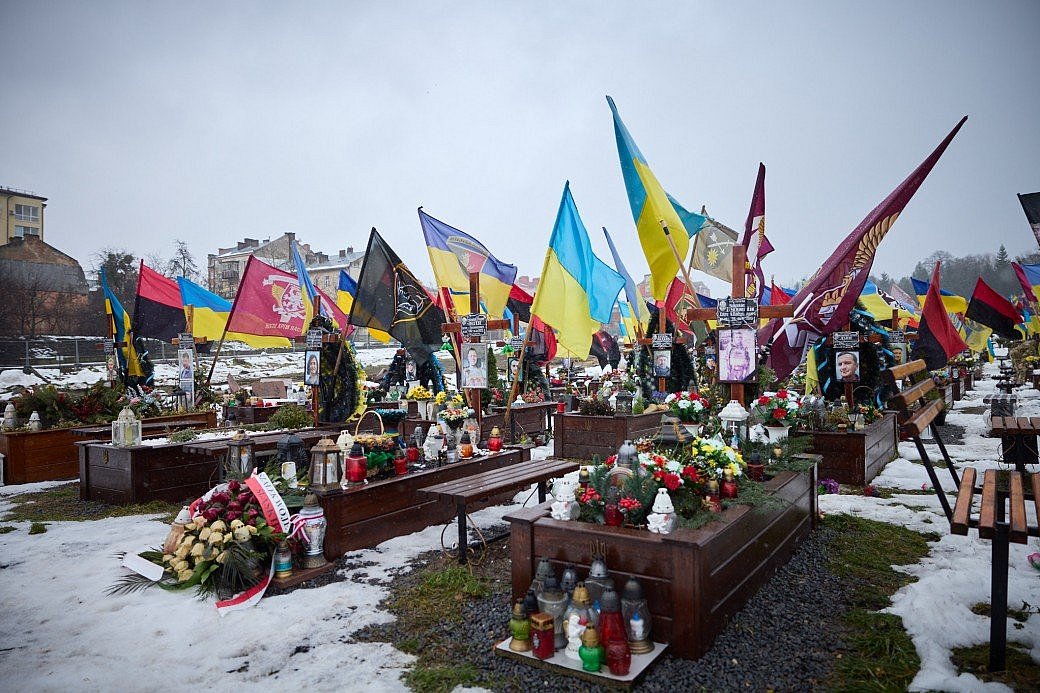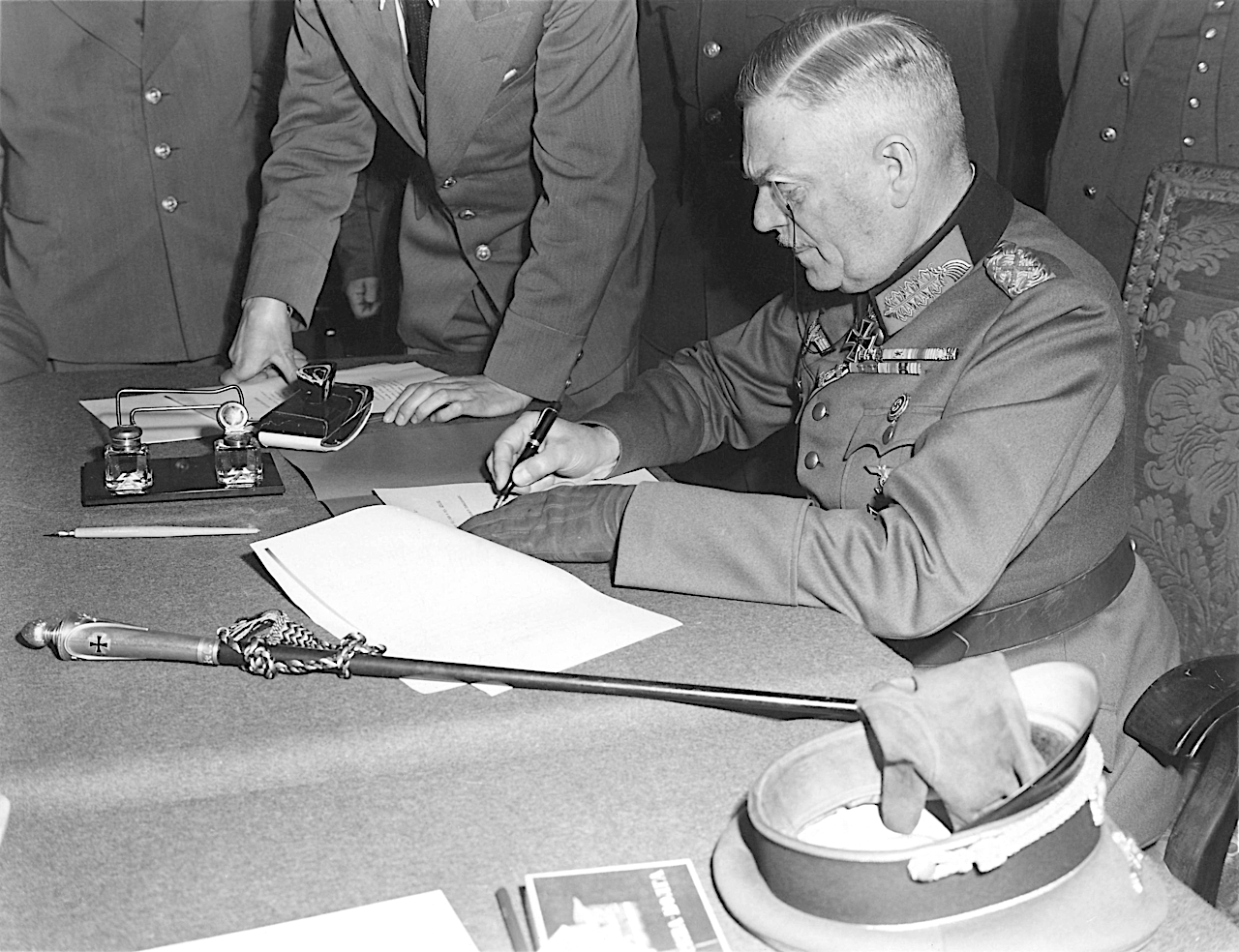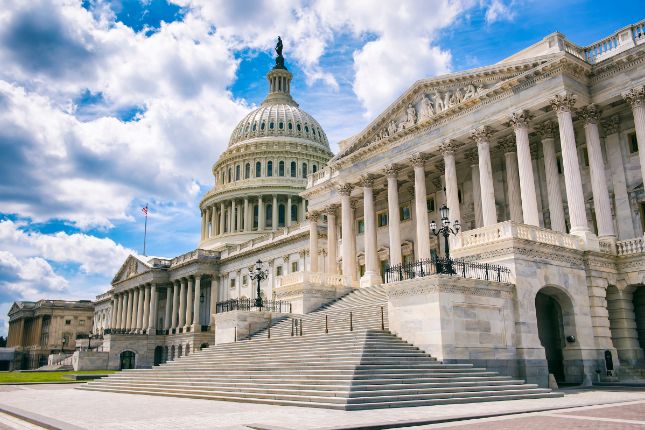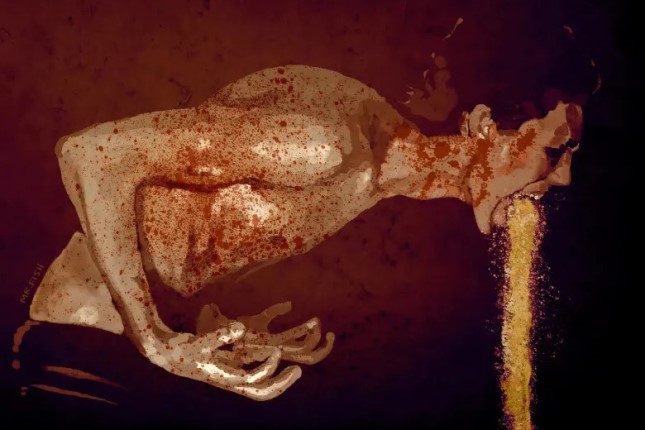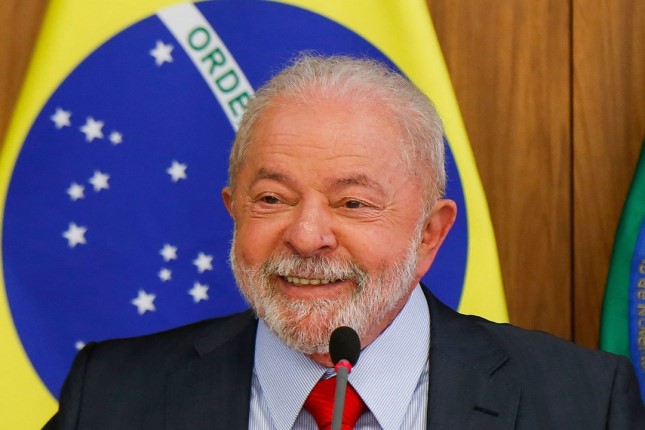In the 16th century, the Catholic Church claimed to be the one true form of Christianity.
Centered in Rome, it had ideologically created a largely unified Europe — in accordance with the belief that for a state to be stable, the citizens must follow the same religion (or ideology).
And indeed, the Catholic Church was organized like a state, owned about one-third of the land of central and Western Europe, collected taxes throughout this area, and had grown exceedingly rich.
The church bureaucracy, empowered and well-to-do, claimed to represent God’s will on Earth and they usually had sufficient authority to enforce that claim.
However, as is so common in history, wealth and power led to corruption. Poor leaders among the popes and local bishops came as often as the adequate ones, and so weakness crept into the affairs of state.
This, in turn, raised doubts about the divine nature of church doctrine. In the years following 1520, rebellion in the form of the Protestant Reformation set in.
This rebellion fragmented Christendom and created divergent Christian sects, most allied to secular noble authorities. Each sect sought to lay claim to being the true Christian faith.
During the chaos that followed, both the Catholic Church and the Protestant sects waged war after war. Christianity, in its now numerous forms, became a faith rationalizing fratricidal slaughter.
One hundred years later, in 1618, they were still at it. It was then that the worst of these wars, known as the Thirty Years War (for it lasted till 1648), occurred.
This war ravaged central Europe and killed at least 4 million people. A singular lesson to be drawn from this prolonged bloodbath was, and still is, that religion tied to state power can breed a murderous ideological impulse.
In 2015 Nicholas Terpstra of the University of Toronto published Religious Refugees in the Early Modern World (Cambridge University Press). This book, which is set against the background of the above history, has several themes:
1) Involuntary mass expulsion is an ancient practice.
2) By the end of the 15th century this practice took on a “national scope.” It did so with King Ferdinand and Queen Isabella’s 1492 decree ordering the expulsion of Jews from their Spanish kingdom.
3) By the 1600s “the forced migration of religious minorities became a normal … feature of popular public policy” — a policy designed to build stronger homogenous communities.
4) The victims of expulsion, refugees and “transplanted exiles,” often do not learn the importance of tolerance from their experience. Indeed, such exiles can become “the most hard-line advocates of religious intolerance and purification” wherever they resettle.
5) By the 20th century “radicalized nationalism” became the prevailing political religion. “The drive to purge various impure groups” from the true tribal community remains “as strong as ever.”
The Zionist Response
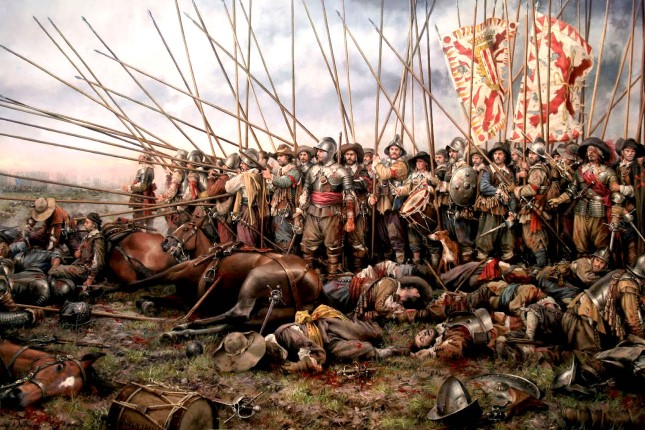
The Battle of Rocroi during Thirty Years War, by contemporary artist Augusto Ferrer-Dalmau. Photo: Wikimedia Commons / CC BY-SA 4.0.
The average citizen in the West knows none of this history and therefore cannot be expected to draw lessons from the multiple tragedies which ensued.
On the other hand, some Americans know the historical reasons the founders of the nation chose to constitutionally separate church and state. But even here, given the selective nature and uncertainties in teaching U.S. history the numbers might be few.
However, there is one group of people who claim to have a long and relevant memory of the consequences of this Church-State arrangement. A prevailing memory of expulsion going back as far as Catholicism’s universal sway.
This is the Jews. In fact, being the victims of the historical drive to create homogenous societies based on religious (or some other kind of ideological) belief, race or ethnicity is the major theme of European Jewish history.
Yet, keep in mind Nicholas Terpstra’s point No. 4. It is one of recent history’s saddest turn of events that nationalistic Jews, that is Zionists, seem to have concluded that their best defense against future suffering is to mimic their historical persecutors in terms of intolerance and the strategy of purge and purification.
It should be understood that Zionists are but a subset of world Jewry, though one of great influence in the decades following World War II.
However, as time has gone by, their penchant for intolerance and group purity has produced a split in the Jewish world between those for and those against Zionist strategy and tactics.
There are multiple historical backstories to this tragedy:
— The long history of European anti-Semitism that involved violent pogroms as well as expulsions.
— The decision by the Zionist subgroup of Western Jews to end this history by following a colonialist path (backed by Western Imperial powers) so as to create a Jewish nation state (Israel) in Palestine.
(The World Zionist Organization presented a map detailing their territorial claims to the League of Nations in 1919. In the north it included what is now Lebanon up to the southern spur of the Litani River, to the east it ran right up to the outskirts of Amman, Jordan, to the west it included a slice of the Sinai, and to the south the map encompassed the Red Sea port of Aqaba. )
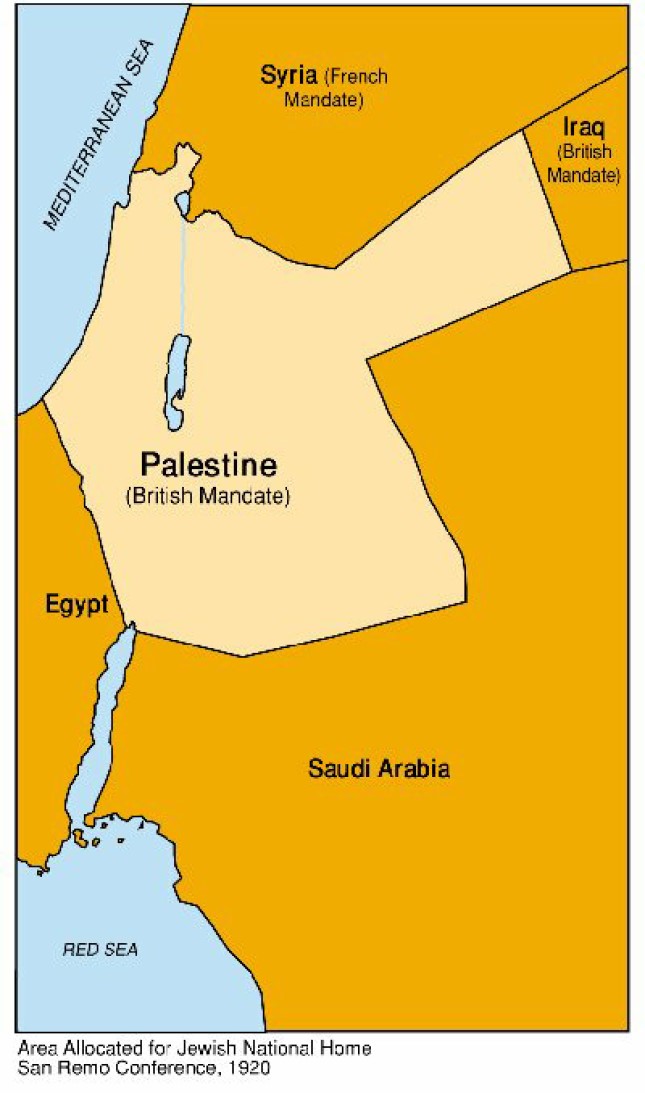
Borders of the British Mandate of Palestine after WWI. Photo: Wikimedia Commons / CC BY-SA 3.0.
— The inevitable resistance, both violent and non-violent, of the indigenous population of Palestine.
— The Israeli attempts to subdue Palestinian resistance which simultaneously turned the Palestinians into a conscious national group and Israel into an apartheid state.
— The present effort on the part of Israel to violently expel the Palestinians from the Occupied Territories. This includes their genocidal destruction of Gaza.
All of these backstories can be tied together into one calamitous drama ending in the present tragic state of affairs.
For the Palestinians it has been a long story of oppression, involuntary exile and now genocidal slaughter.
For the Jews it has been an object lesson in the fact given above — that religion tied to state power can breed a murderous ideological impulse.
That impulse is in the process of tearing Jewish communities apart and has shaped the Zionists into a harrowing caricature of their own historical persecutors.
(Gaza under Israeli attack brings to mind Picasso’s image of Guernica — the Spanish town bombed to rubble by the Nazis in 1937. Today, the Israelis even use Gaza as a testing ground for their weaponry, as the Nazis used Guernica.)
A sense of the Jewish part of this tragedy can be had by considering an essay recently published by Amanda Gelender, writer and mental health advocate, in The Middle East Eye.

1819 Hep Hep Riots in Wurzburg, during anti-Jewish pogroms in Germany; from a contemporary engraving by Johann Michael Voltz. Photo: Museumslandschaft Hessen Kassel – Objektdatenbank / Wikimedia Commons / Public domain.
Here Gelender laments the fact that “Israel’s use of religious symbols” in its ongoing slaughter in Gaza “has robbed Jews of a faith practice divorced from nationalist barbarism … After Palestinians, Zionism’s next victim is the Jewish faith.”
Indeed, the whole Zionist argument that Judaism and Zionism are the same thing links religion to political power, just as Catholicism was bound to a Papal state in the 16th century, and the various Protestant sects to secular states in the 17th.
It also resurrects as present policy the most inhuman aspects of the Old Testament wherein God commands the Israelites to “attack the Amalekites and completely destroy everything they have.”
Just to be sure the divine order is not misunderstood, God itemizes the targets: “Kill men, women, infants and nursing babies, oxen and sheep, camels and donkeys.”
Israeli Prime Minister Netanyahu has referred to the Palestinians as Amalekites, and so in Gaza, his government seems to be reenacting the biblical conquest of Canaan.
Today, as Gelender points out, “Israel has murdered more than 20,000 Palestinians and counting. It has displaced almost two million people and intentionally destroyed homes, the ecosystem and infrastructure to render Gaza uninhabitable for those who manage to survive starvation, dehydration and carpet bombing.”
All of this has energized Amanda Gelender’s opposition to the connection between Judaism and the Israeli state.
She accurately points out that, “so long as Zionist nationalism has existed, so have anti-Zionist Jews” and concludes that it is now the mission of such Jews to “Disentangle Zionism from Judaism.”
In fact, this is a life and death struggle for world Jewry.
Today, a growing number of Americans, about one-third of both Jews and non-Jews, disapprove of Israeli aggression in Gaza as well as President Joe Biden’s military and political support of it.
This will not be enough to save either the Jews or the Palestinians from the horrors of a religion tied to state power — a state that claims Palestinian land on the basis of Biblical mythology and colonial sanction rather than enduring residence.
One-third is, however, a start. Just a few decades ago the number of Americans critical of Israel would have been noticeably lower. And, thanks to Israel’s built in (actually educated in) myopic worldview we can rely on that state to continue its barbaric ways even if it manages to get rid of its present set of fascistic leaders.
So the numbers of those alienated from Zionism will grow, and do so throughout the West. There will, at some point, come a day of reckoning.
The real question is how many dead and maimed Palestinians will it take to get there and how many Jews will have lost their ethical souls in the process.
Main photo: St. Peter’s Basilica in Rome at sundown © Dnalor 01 / Wikimedia Commons / CC BY-SA 3.0.
Source: Consortium News.
